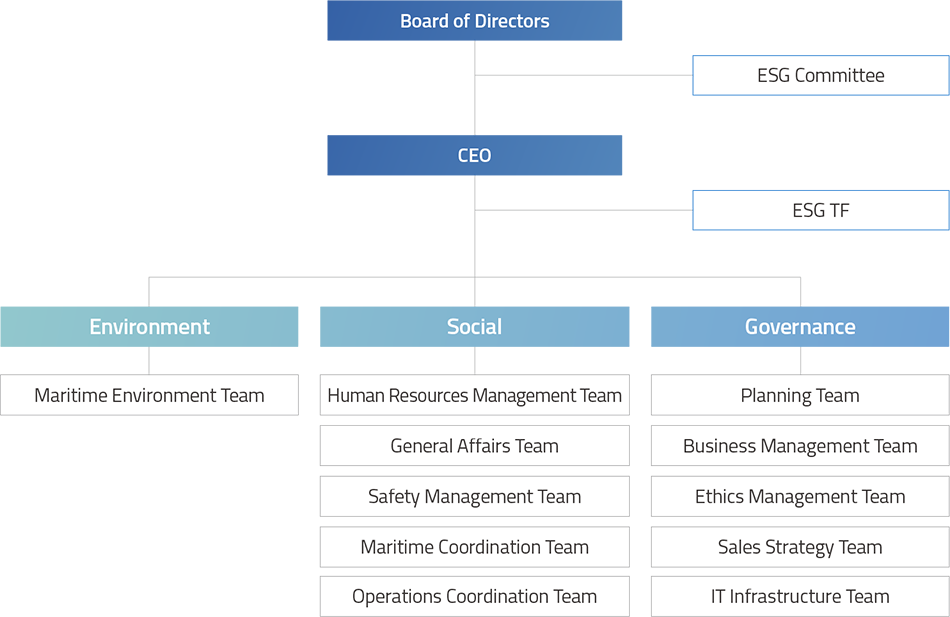Sustainability at Pan Ocean
- ESG Ratings
- Sustainability Management
- Environmental and Social Impacts Across the Business Value Chain
- Stakeholder Engagement
- Materiality Assessment
Governance

Board of Directors
The Board of Directors serves as Pan Ocean’s highest decision-making body, with its CEO also holding the position of board chair. Details and reasons for this dual responsibility are disclosed through the annual Corporate Governance Report. Pan Ocean has proactively established and operated an ESG Committee within the board, granting it independent authority to review and deliberate ESG-related issues. Decisions made by the ESG Committee are reported to the board, maintaining an interdependent decision-making system.
ESG Committee
The ESG Committee is responsible for determining and approving Pan Ocean’s ESG-related business plans, supervising, evaluating, and reviewing relevant activities. The committee mainly takes charge of approving and monitoring the implementation of mid- to long-term ESG management strategies, establishing and revising ESG-related systems and policies, and reviewing and deliberating on safety and health policies in accordance with the Serious Accidents Punishment Act. It holds regular meetings twice a year in compliance with the regulations and may convene additional meetings as needed.
ESG TF
The ESG TF consists of department chiefs and working-level staff responsible for ESG-related tasks at Pan Ocean. It establishes overall ESG management goals and develops detailed strategies to meet them, as well as carrying them out. Furthermore, the task force handles various external collaborations and response activities associated with ESG, such as addressing key stakeholders’ requests for sustainability performance assessments and responding to assessments from various ESG rating agencies.
Summary of Key ESG Committee Agendas
| Date | Agenda | Status |
|---|---|---|
| Feb. 2024 | To approve 2024 Safety & Health Management Plan | Approved |
| June 2024 | To approve appointment of ESG Committee Chair | Approved |
| To approve 2023 environmental performance and 2024 environmental targets | Approved | |
| To approve the Sustainability Report publication | Approved | |
| Feb. 2025 | To approve 2025 Safety & Health Management Plan | Approved |
| May 2025 | To report on the 2025 ESG Materiality Topics | Approved |


